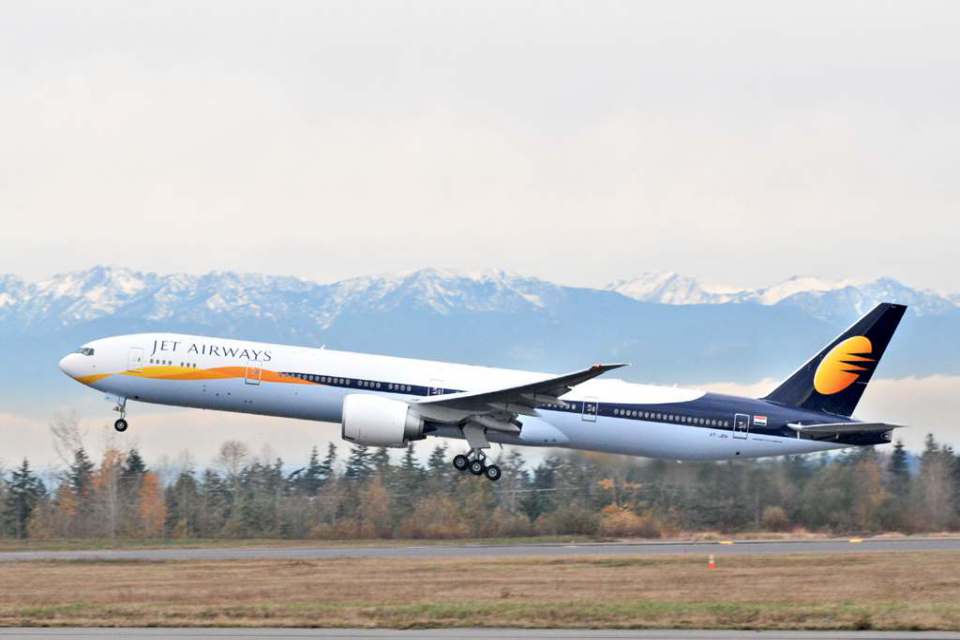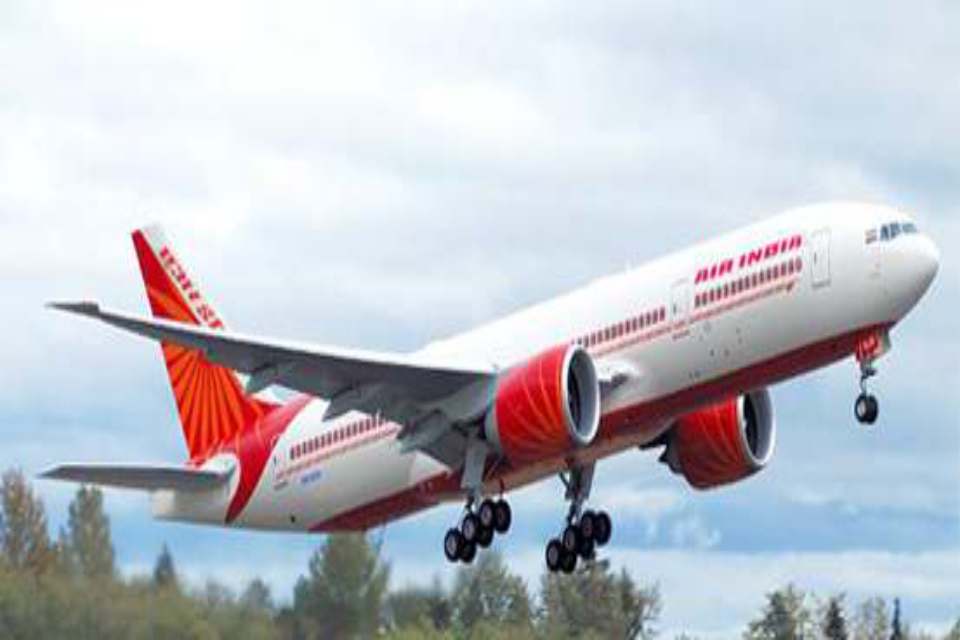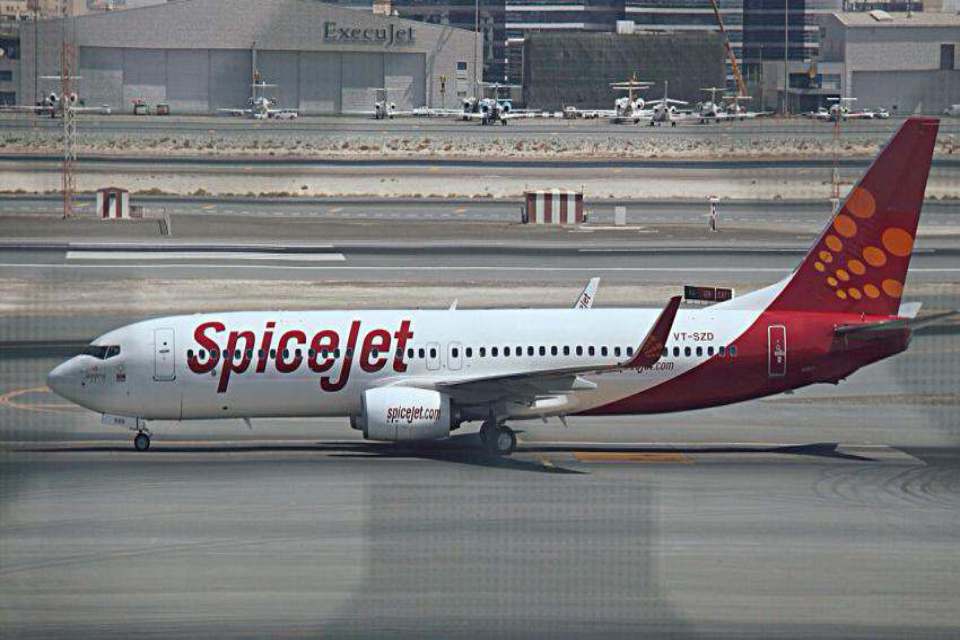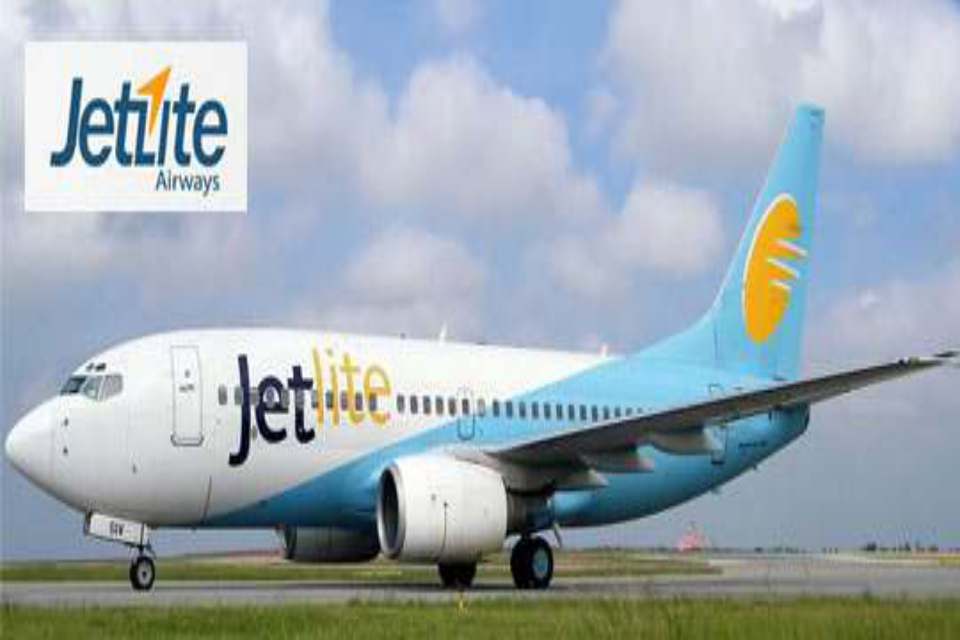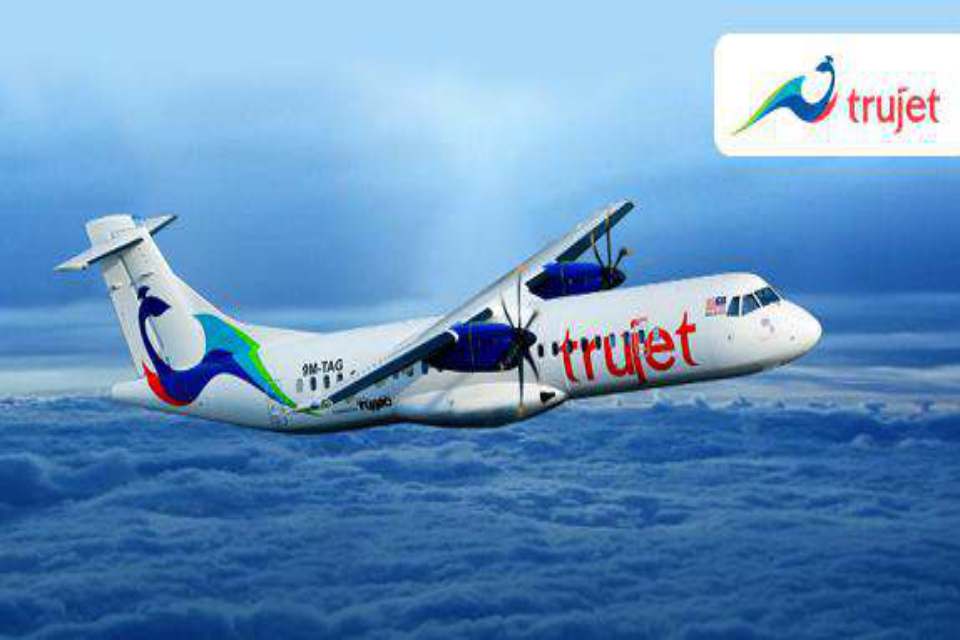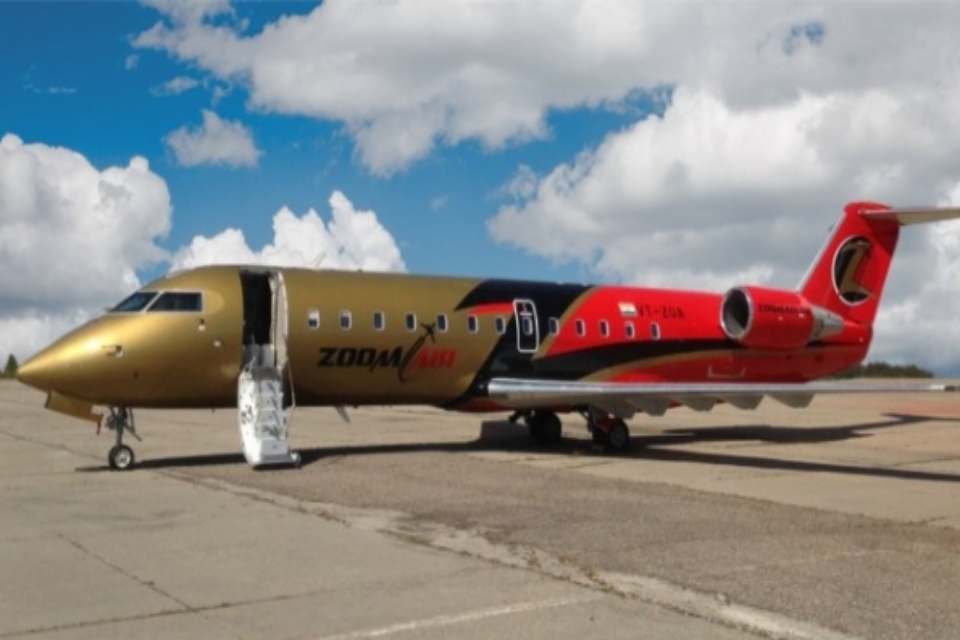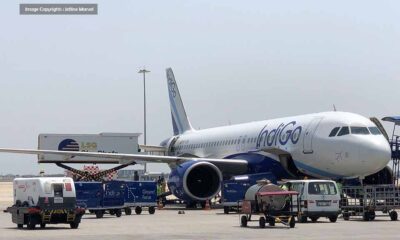Aviation
Top 10 Airlines in India 2018
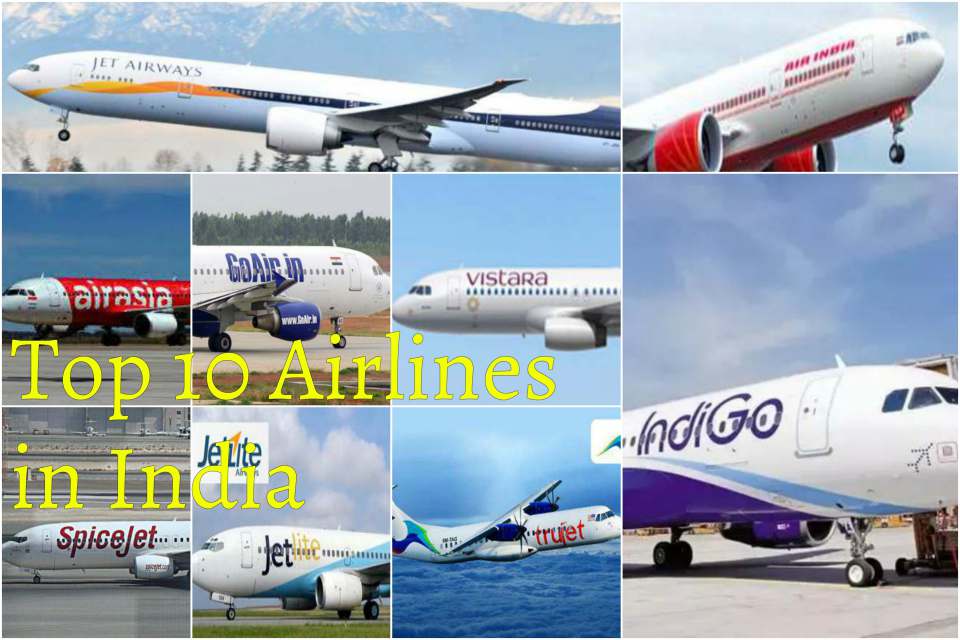
Top 10 Airlines in India 2018
The DGCA reported Performance of domestic airlines for the year 2018. Traffic data submitted by various domestic airlines has been analysed for the month of Feb 2018. Following are the salient features:
Passenger Growth
Passengers carried by domestic airlines during Jan-Feb 2018 were 222.09 lakhs as against 182.34 lakhs during the corresponding period of previous year thereby registering a growth of 21.80 %
1. IndiGo
IndiGo (Registered as Interglobe Aviation Ltd.) is a low-cost airline headquartered at Gurugram, Haryana, India. It is the largest airline in India by passengers carried and fleet size, with a 42% market share as of February 2018. It is also the largest individual Asian low-cost carrier in terms of jet fleet size and passengers carried, and the Seventh largest carrier in Asia with over 41 million passengers carried in 2016. The airline operates to 49 destinations both domestic and international. It has its primary hub at Indira Gandhi International Airport, Delhi.
2. Jet Airways
Jet Airways is a major Indian international full-service airline based in Mumbai. In July 2017, it was the second-largest airline in India after IndiGo with an 18.2% passenger market share. It operates over 300 flights daily to 68 destinations worldwide from its main hub at Chhatrapati Shivaji International Airport and secondary hubs at Amsterdam Airport Schiphol, Chennai International Airport, Indira Gandhi International Airport, Kempegowda International Airport and Netaji Subhas Chandra Bose International Airport.
3. Air India
Air India is the flag carrier airline of India.It is owned by Air India Limited, a government-owned enterprise, and operates a fleet of Airbus and Boeing aircraft serving 90 domestic and international destinations. The airline has its hub at Indira Gandhi International Airport, New Delhi, alongside several focus cities across India. Air India is the largest international carrier out of India with an 18.6% market share. Over 60 international destinations are served by Air India across four continents. Additionally, the carrier is the third largest domestic airline in India in terms of passengers carried (after IndiGo and Jet Airways) with a market share of 29% as of July 2018. The airline became the 27th member of Star Alliance on 11 July 2014.
4. SpiceJet
SpiceJet is a low-cost airline headquartered in Gurugram, India. It is the third largest airline in the country by number of domestic passengers carried, with a market share of 27% as of July 2017. The airline operates 312 daily flights to 55 destinations, including 45 Indian and 10 international destinations from its hubs at Delhi, Kolkata and Hyderabad.
5. GoAir
GoAir is a low-cost carrier based in Mumbai, India. It is owned by the Indian business conglomerate Wadia Group. In July 2017 it was the fifth largest airline in India with an 21% passenger market share. It commenced operations in November 2005 and operates a fleet of Airbus A320 aircraft in all economy configuration. As of October 2017, the airline operates over 140 daily flights to 23 cities from its hubs at Mumbai, Delhi and Kolkata.
6. Air Asia
AirAsia India is an Indian low cost carrier headquartered in Chennai, India. The airline is a joint venture with AirAsia Berhad holding 49% stake in the airline, Tata Sons holding 40.06% and Arun Bhatia holding the remaining 10% through his company, Telestra Tradeplace. Air Asia India commenced operations on 12 June 2014 with Bangalore as its primary hub.
7. Air Vistara
Tata SIA Airlines Limited, operating as Vistara, is an Indian domestic airline based in Gurgaon with its hub at Delhi-Indira Gandhi International Airport. The carrier, a joint venture between Tata Sons and Singapore Airlines, commenced operations on 9 January 2015 with its inaugural flight between Delhi and Mumbai. The airline had carried more than two million passengers by June 2016 and as of May 2017, has a 7.9% share of the domestic carrier market, making it the 6th largest domestic airline. The airline operates to nineteen destinations with a fleet of Airbus A320-200 aircraft. Vistara was the first airline to introduce premium economy seats on domestic routes in India.
8. JetLite
JetLite is a low-cost subsidiary of Jet Airways. It was formerly known as Air Sahara until the buyout by Jet Airways which rebranded the airline as JetLite.The airline was established on 20 September 1991 and began operations on 3 December 1993 with two Boeing 737-200 aircraft as Sahara Airlines, as part of the major Sahara India Pariwar business conglomerate. Jet Airways announced its first takeover attempt on 19 January 2006, offering US$500 million (₹20 billion) in cash for the airline
9. Trujet
Turbo Megha Airways Pvt Ltd, operating under the brand name TruJet, is an Indian low-cost regional airline based at Rajiv Gandhi International Airport in Hyderabad. It was founded in 2013 by Vankayalapati Umesh, managing director of Turbo Aviation, and includes actor Ram Charan as director and brand ambassador. The airline, which began operations in July 2015, focuses on connecting Tier-2 cities and targets pilgrims and middle class travellers. As of November 2016, TruJet flies to ten destinations in India using four ATR 72 aircraft. In May 2017, Trujet was the eighth largest scheduled airline in India with a 0.5% market share.
10. Zoom Air
Zoom Air, the brand name for Zexus Air Services, is a regional airline based at Indira Gandhi International Airport in Delhi, India. Founded in 2013 as Zexus Air, the airline obtained its air operator’s certificate in February 2017 and began operations later in the month. As of March 2017, Zoom Air flies to seven destinations in India using two Bombardier CRJ200’s.
Airline Market share (%) Passenger Load Factor (%) Feb-Month
- Indigo Airlines 42.2 91.8
- Jet Airways 32.09 90.4
- Air India 29.53 86.7
- Spice Jet 27.79 96.3
- Go Air 21.16 90.4
- Air Asia 9.45 88.0
- Air Vistara 7.94 91.2
- Jet Lite 4.95 90.3
- TruJet 0.63 77.0
- Zoom Air 0.06 84.2
Report Courtesy : DGCA, India
For Download

Aviation
South Korea Introduces Cutting-Edge MRO Center for F-35 and IAI

South Korea is set to make waves in the aerospace industry with the establishment of a cutting-edge Maintenance, Repair, and Overhaul (MRO) hub for F-35 fighter jets and IAI (Israel Aerospace Industries) aircraft.
Central to this initiative is the specialization in converting Boeing 777-ERSF, colloquially known as the “Big Twin,” from passenger to freighter configurations. Under the terms of the agreement, IAI will spearhead the conversion of six B777-300ER and B777-200LR aircraft annually, commencing in 2024. This strategic move is in response to the anticipated surge in demand for wide-body freighter aircraft capable of long-haul flights.
Furthermore, South Korea’s forward-looking vision extends beyond aircraft conversion, with plans to establish a Lockheed Martin F-35 maintenance, repair, and overhaul depot at Cheongju Air Base by 2027. This strategic move not only enhances the operational readiness of South Korea’s air force but also positions the nation as a regional hub for F-35 maintenance expertise.
In preparation for this expansion, thirty Republic of Korea Air Force (ROKAF) engineers and technicians are slated to undergo intensive maintenance training in the United States in 2025, a testament to South Korea’s commitment to fostering local expertise and talent.
IAI’s visionary approach to certification and collaboration underscores the potential for transformative change. With plans for the 777-300ERSF certification process set to unfold in Israel, followed by the rigorous scrutiny of regulatory agencies such as the US Federal Aviation Administration (FAA), the stage is set for the ‘Big Twin’ to soar to new heights of success.
In partnership with esteemed entities like STK and Incheon International Airport Corporation, this collaboration promises to unleash a wave of benefits, amplifying the resilience and competitiveness of the Korean aviation sector while catalyzing job creation and economic prosperity.
Aviation
Lockheed Martin Expresses Interest in Joining AMCA Project

Lockheed Martin, a leading global aerospace and defense company, is demonstrating its dedication to strengthening collaborations with India’s research, industry, and academic sectors. With its rich experience in the aerospace industry and renowned for building some of the world’s most advanced jets, Lockheed Martin is now exploring opportunities to contribute to India’s aerospace sector, potentially providing a significant boost to aerospace technology in the country.
Randy Howard, Vice President of Global Pursuits at Lockheed Martin Aeronautics, recently underscored their interest in exploring “advanced transfer of technology opportunities” with Indian partners, signaling a proactive approach towards fostering technological exchange and advancement in the aerospace domain.
India has been at the forefront of fighter jet development since the 1970s, having produced its own cost-effective fighter jets and combat helicopters, while continually upgrading to maintain competitiveness on a global scale.
Lockheed Martin stands as a dominant force in the aircraft industry, renowned for developing cutting-edge planes like the F35 and F22, some of the most advanced fighter jets globally. They’ve also contributed to projects like the South Korean KF21 aircraft for defense purposes through collaborations.
Now, Lockheed Martin has set its sights on India’s defense sector manufacturing processes, expressing interest in partnering with India on its most anticipated project, the Advanced Medium Combat Aircraft (AMCA), likely to be a 5th generation fighter jet for the Indian military.
Their proposed collaboration could involve a spectrum of advanced technologies, including the Auto Ground Collision Avoidance System (Auto GCAS), a life-saving technology that intervenes to prevent ground collisions, thus significantly enhancing flight safety for Indian pilots.
Lockheed Martin is extending its expertise to design and develop an indigenous cockpit for the F-21 fighter jets, which India is procuring. This collaboration with Tata also includes the development of fighter jet wings. Established in 2023, this partnership adopts a “Ground Floor Design” strategy aimed at equipping India with an in-depth comprehension of 5th-generation cockpit technology and Man-Machine Interface (MMI) systems.
As India’s Fighter jet program advances with finalized aircraft frame and engine prototypes, Lockheed Martin has expressed interest in joining the project. They see a groundbreaking opportunity in cooperative 5th Generation Fighter Development, potentially expediting the AMCA program’s progress through technology and expertise sharing.
Furthermore, Lockheed Martin is keen on collaborating on large-wing, jet-powered UAV platforms, which could enhance India’s unmanned aerial capabilities.
While discussions are ongoing, and specific collaboration details await finalization, this initiative represents a potentially transformative stride in India’s aerospace self-reliance journey and Lockheed Martin’s strategic engagement with the Indian market.
Aviation
Can Airline Seat Cushions Be Used As Life Jackets?

In the event of an aircraft ditching into water, there’s a common question: Can aircraft seats serve as an alternative to life jackets for flotation? The answer lies in understanding their respective functions.
While seat cushions can provide some buoyancy in water, they are not intended nor certified to function as life jackets. Their primary purpose is to offer cushioning for passengers during flight. On the other hand, life jackets are meticulously engineered to keep individuals afloat in water, equipped with buoyancy materials, secure straps, and reflective elements for visibility. They offer numerous advantages over mere cushions.
While a seat cushion might offer temporary assistance in staying afloat, it’s not a dependable substitute for a proper life jacket during an emergency. It’s crucial to utilize approved safety equipment when near bodies of water. A life jacket, designed to keep a person buoyant for extended periods, offers the rigidity needed for prolonged flotation and allows for easy movement of the arms to navigate effectively.
What fabric is used in aircraft seats?
Seats are meticulously designed to fulfill multiple purposes, ensuring passenger comfort, safety, and protection from unforeseen circumstances like fires and accidents. A typical design incorporates an aluminum frame with blocks of polyurethane foam affixed to it. Additionally, a layer of fire-resistant fabric, such as Kevlar or Nomex, is often applied over this framework, topped with a layer of cloth or leather.
Leather seats, while luxurious, are more expensive compared to traditional cloth seats. The majority of fabrics used in seat upholstery contain at least 90% wool fiber, with the remainder typically consisting of polyamide (nylon). Wool stands out as the primary fiber chosen for commercial airline seating fabric due to its desirable properties and suitability for such applications.
What is the lightest economy seat?
In recent times, airlines have been downsizing seat dimensions to accommodate more passengers, resulting in reduced cushion length and leg space. This contrasts with earlier times when airlines offered more generously cushioned seats and ample amenities.
According to Recaro Seats Company, their SL3710 model represents the lightest economy class seat available, weighing in at a mere 8 kg (17.6 lb.), setting a new standard in aircraft seating.
For individuals weighing more than 350 pounds, fitting into a standard economy-class seat can be a challenge due to the narrower dimensions. Economy seats, also referred to as “coach,” “standard,” or “main cabin” seats, typically range from about 40 to 48 centimeters in width, further emphasizing the need for more accommodating seating options.


